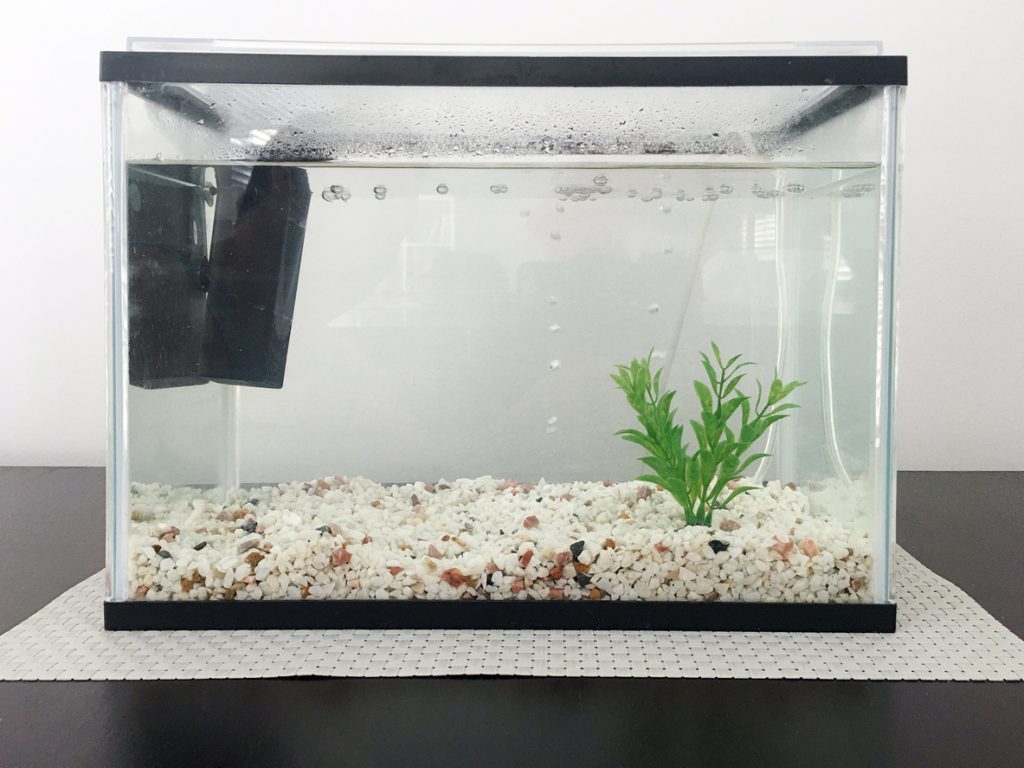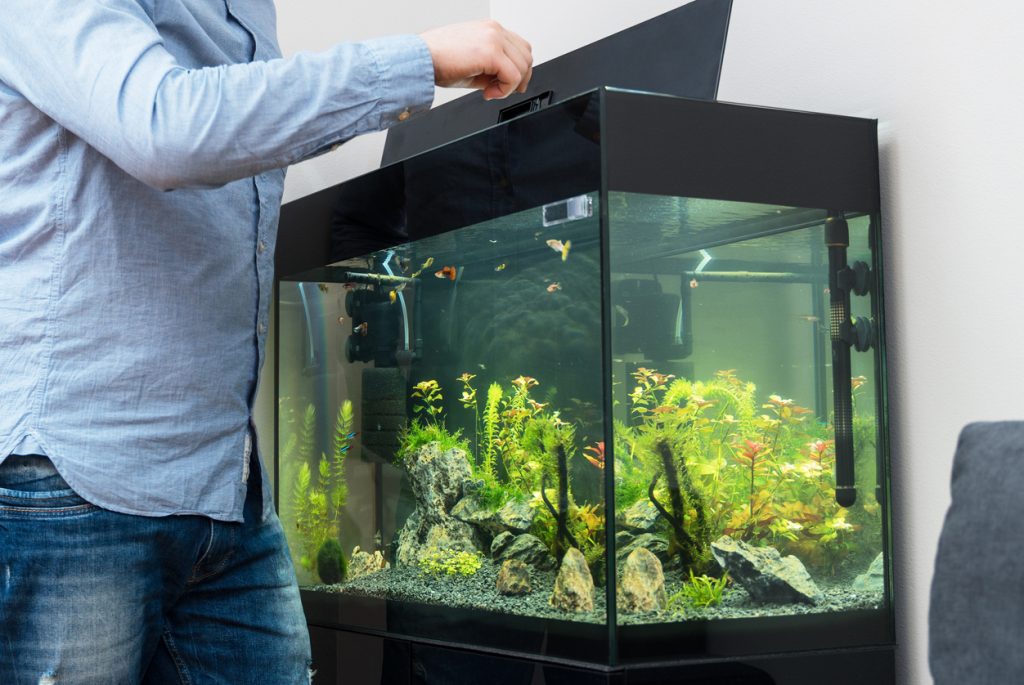If you’re planning to set up a new fish tank in your home, you probably know the process is more complicated than just adding water and fish! It’s crucial to establish the environment correctly and get the conditions just right so your new pets will thrive. To do this you’ll have to set up the tank carefully and establish the right water chemistry – read on to find out how.
Setting up a new fish tank
First things first: it’s important to make sure you’ve got all the equipment you need to keep your chosen fish happy and healthy. For some handy tips on choosing fish and a list of the equipment to buy, check out our guide.

Once you’ve got all you need, let’s look at how to set up a new fish tank:
1. Choose the right spot
Before you start setting up your tank, you’ll need to choose where to put it. For the wellbeing of your fish it’s generally best to position your tank out of direct sunlight and not too close to a radiator, TV or speakers. It does help to be near to a power supply though, so you can plug in your equipment such as the filter and heater.
2. Wash everything
Before setting up a tank for the very first time, it’s really important to make sure everything that will go in it is nice and clean. This includes the substrate (the material on the bottom of your tank) as unwashed gravel can be dusty and this can make a new fish tank cloudy. So, wash all gravel and ornaments thoroughly with tap water – you can use a colander or repeatedly fill and drain a bucket until the water runs clear. Avoid soap or detergents though, as these can be harmful to fish. Once you’ve washed the substrate thoroughly, add it to the tank. You can build up the substrate in areas where you want plants to take root.
3. Add water
Adding water too quickly could disturb the substrate you’ve just carefully arranged, so try pouring it in slowly onto a saucer placed on the substrate. For freshwater aquariums you can just use tap water, but for saltwater aquariums it’s preferable to use purified water (e.g. tap water than you have passed through a ‘reverse osmosis’ unit). Depending on your tank setup, you may prefer to fill your tank completely at this stage, or only fill half full until you’ve positioned the equipment and decorations.
Once you’ve filled up your tank, add a de-chlorinator (otherwise known as a water conditioner) as per the packet instructions. If you’ve got a saltwater aquarium, you’ll also need to add salt, again following the instructions on the packet and measuring the water concentration with a hydrometer or salinity monitor.
4. Add equipment and decorations
Now’s the time to add your equipment, such as your filter and heater. If you’re planning to use an air pump connected to outlets like air stones or decorations, make sure the airline tubing is connected up securely. Then add plants, planting the roots in the substrate if they’re live, and position any ornaments around them.

5. Cycle the tank
Now comes the hardest bit – the patience! It’s tempting to add your new fish immediately, but a new tank will need to stabilise before it’s safe. The water will have to stand for a few days after conditioning, you’ll need to be sure your equipment is working and your water is the right temperature, and you’ll also have to think about cycling the tank.
Cycling the tank basically means establishing a healthy population of bacteria in your filtration system. These beneficial bacteria are really important to keep the water clean, as they convert the toxic ammonia that comes from fish waste into nitrite and then nitrate, which is much less toxic.
To establish a population of good bacteria, you’ll need to give them some waste to live off. It’s possible to provide this either by adding ammonia or organic material (in ‘fishless cycling’) or by introducing just a few hardy fish to start with. While fishless cycling means that you will have to look at an empty tank for several weeks, many people recommend it as it doesn’t involve exposing fish to toxins.
To monitor the water conditions during the cycling period, test regularly with water test kits to assess important conditions such as the pH and the levels of ammonia, nitrite and nitrate. If you are cycling your tank with a few fish present, remember that levels of toxic products will be higher if there’s more uneaten food around, so it’s crucial to avoid overfeeding your fish.
At the start of the cycling period, it’s not unusual to see a new fish tank cloudy, but this will usually clear as the bacteria become established. However, it can take several weeks before your aquarium is fully ‘cycled’ and able to support a whole population of fish.
Of course, once you’ve got your tank set up, you’ll need to think about keeping the environment nice and healthy with frequent cleaning!
Love your pets? So do we! Join in the conversation over on our Facebook page.


